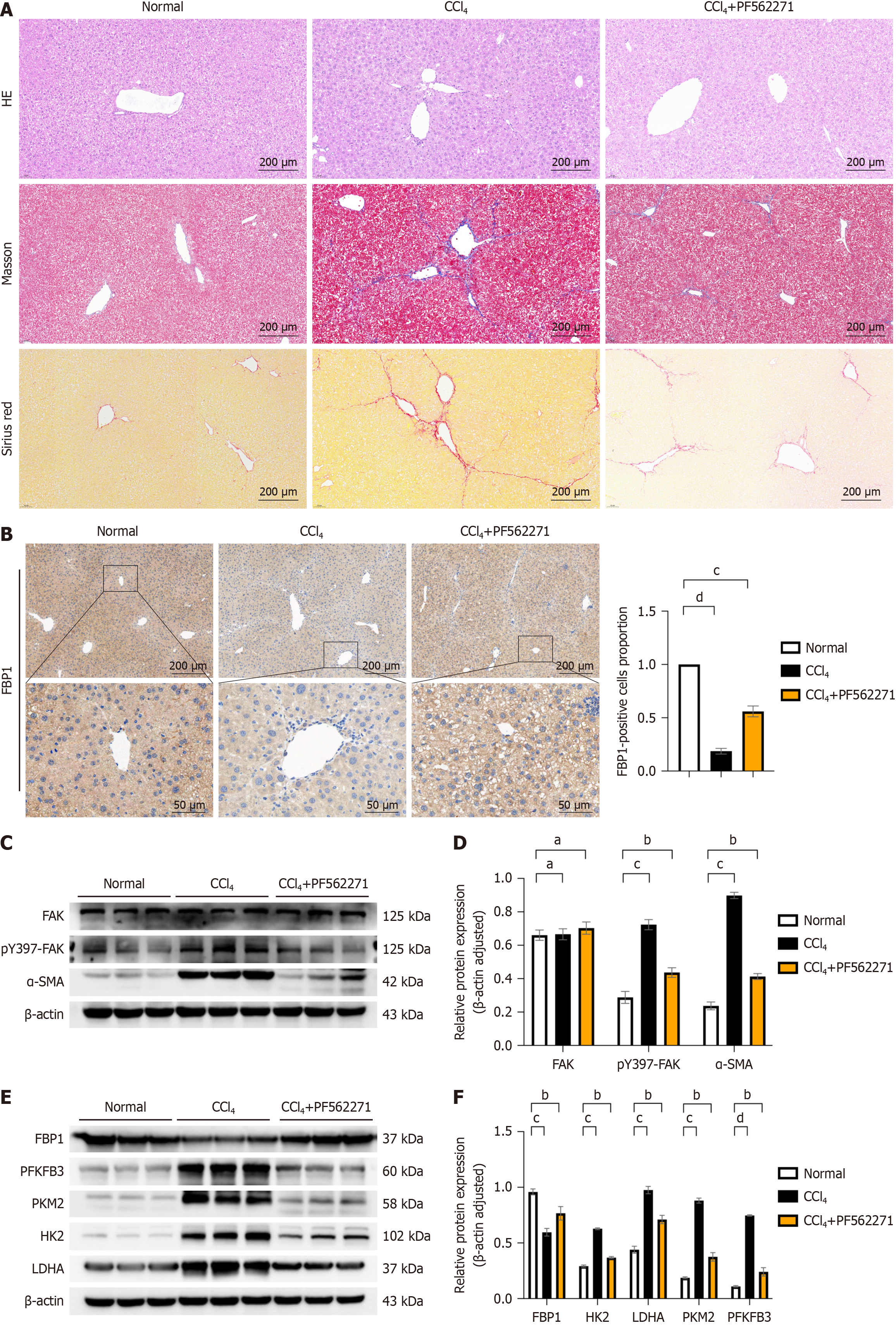Copyright
©The Author(s) 2025.
World J Gastroenterol. Jul 28, 2025; 31(28): 107361
Published online Jul 28, 2025. doi: 10.3748/wjg.v31.i28.107361
Published online Jul 28, 2025. doi: 10.3748/wjg.v31.i28.107361
Figure 4 In mouse models of liver fibrosis, focal adhesion kinase inhibition ameliorates hepatic fibrosis.
A: Liver tissues from mice in each group were stained with hematoxylin and eosin (HE) to observe inflammatory cell infiltration, cellular morphology, and lobular architecture; Masson’s trichrome staining and Sirius red staining were performed to assess fiber deposition; B: Immunohistochemical analysis was conducted to detect the expression of fructose-1,6-bisphosphatase 1 (FBP1) protein in the livers of mice from each group, and the number of positive cells in each group was statistically analyzed. Scale bar: 200 μm, 50 μm; C: Western blot (WB) analysis was used to detect the expression of liver fibrosis marker alpha smooth muscle actin (α-SMA), as well as focal adhesion kinase (FAK) and phosphorylated FAK (p-FAK) proteins, with β-actin as the internal control; D: Grayscale value analysis was performed, and statistical significance relative to the normal group or carbon tetrachloride (CCl4) group was assessed; E: WB analysis was employed to detect the protein expression of aerobic glycolysis enzymes, including lactate dehydrogenase A (LDHA), hexokinase 2 (HK2), phosphofructo-2-kinase/fructose-2,6-biphosphatase 3 (PFKFB3), pyruvate kinase M2 (PKM2), and FBP1, with β-actin as the internal control; F: Grayscale value analysis was conducted, and statistical significance relative to the normal group or CCl4 group was evaluated. All data are from three independent samples. Data are represented as the mean ± SD. aNot significant; bP < 0.01, cP < 0.001, dP < 0.0001.
- Citation: Wu HY, Han L, Ran T, Sun Y, Zhang QX, Huang T, Zou GL, Zhang Y, Zhou YM, Lin GY, Chen SJ, Wang JL, Pan C, Lu F, Pu HF, Zhao XK. FBP1 as a key regulator of focal adhesion kinase-mediated hepatic stellate cell activation: Multi-omics and experimental validation. World J Gastroenterol 2025; 31(28): 107361
- URL: https://www.wjgnet.com/1007-9327/full/v31/i28/107361.htm
- DOI: https://dx.doi.org/10.3748/wjg.v31.i28.107361









